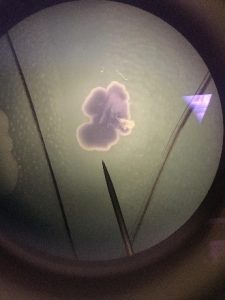
cerevisiae, analyses of gene function using plasmids in S. pombe, it has not been commonly used because there have been no systematic studies reporting its efficiency in this yeast. Although a previous study has reported GRC feasibility in S. The fission yeast Schizosaccharomyces pombe is also widely recognized as a model eukaryote. Cells with plasmids that have the desired structure are used for functional analysis. coli to amplify and check the structure of the plasmid with restriction enzyme digestion and DNA sequencing. The constructed plasmid is recovered from the transformed cell into E. The fragments are connected by the homologous recombination activity that occurs within the cell. Transformants are selected by identifying the plasmid vector marker.

Both DNA fragments are then simultaneously introduced into the cell. DNA fragment(s) from the insert are amplified by PCR, ensuring that the sequence at the end of the fragment is homologous with that of the plasmid. Basic gap-repair cloning procedure.ĭNA fragment(s) from a linearized plasmid vector are prepared by restriction enzyme digestion or by PCR. Thus, GRC is very effective for rapid analyses of gene function.įigure 1. cerevisiae cells to study their function. In these cases, the target genes are directly cloned into S. In the budding yeast Saccharomyces cerevisiae, efficient GRC is observed due to the high homologous recombination activity of this organism, , which has been used to construct large-scale systematic plasmid collections –. The basic GRC procedure is shown in Figure 1. However, a second cloning method using homologous recombination activity (often designated gap-repair cloning or GRC) allows for more design flexibility during construction as restriction sites are not used. The constructed DNA is usually amplified in E. In many cases, plasmids are constructed in vitro by digesting (cutting) DNA fragments with restriction enzymes at specific sites (restriction sites) and then ligating (joining) the resulting fragments. The funders had no role in study design, data collection and analysis, decision to publish, or preparation of the manuscript.Ĭompeting interests: The authors have declared that no competing interests exist.Ĭonstruction of plasmids is crucial in modern molecular biology.

This is an open-access article distributed under the terms of the Creative Commons Attribution License, which permits unrestricted use, distribution, and reproduction in any medium, provided the original author and source are credited.įunding: This work was supported in part by the PRESTO program, Japan Science and Technology Agency (HM) the Special Coordination Fund for Promoting Sciences and Technology, Ministry of Education, Culture, Sports, Science, and Technology (HM) a Grant-in-Aid for Scientific Research on Innovative Areas “The Physicochemical Field for Genetic Activities”, Ministry of Education, Culture, Sports, Science, and Technology (HM) and by a Grant for Industrial Technology Research Program, New Energy and Industrial Technology Development Organization (KW). Received: JanuAccepted: FebruPublished: March 11, 2010Ĭopyright: © 2010 Chino et al. PLoS ONE 5(3):Įditor: Jürg Bähler, University College London, United Kingdom Citation: Chino A, Watanabe K, Moriya H (2010) Plasmid Construction Using Recombination Activity in the Fission Yeast Schizosaccharomyces pombe.


 0 kommentar(er)
0 kommentar(er)
